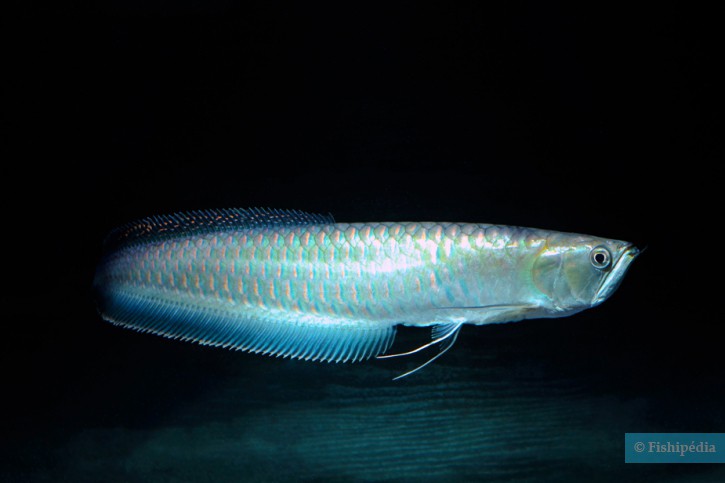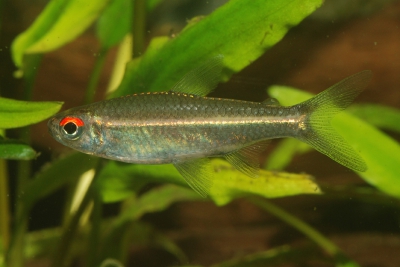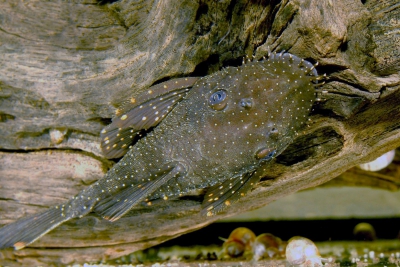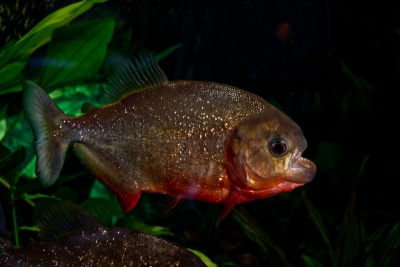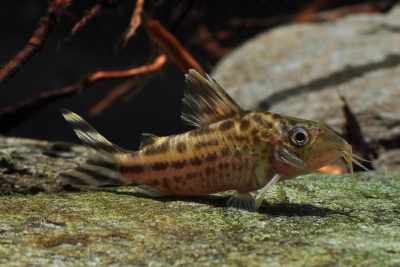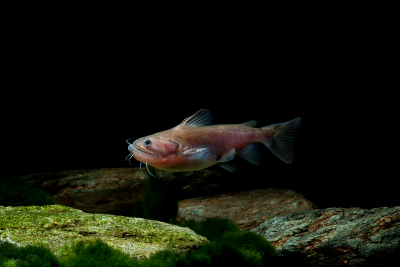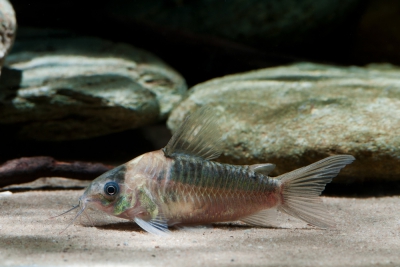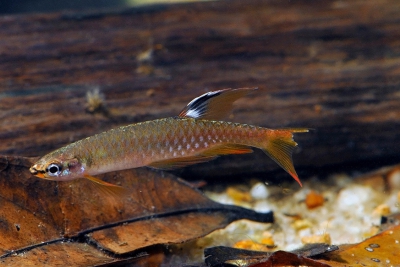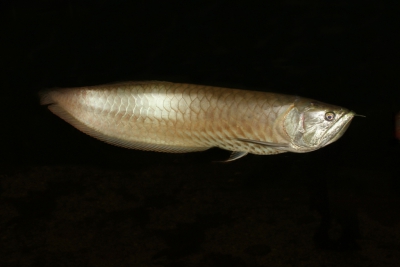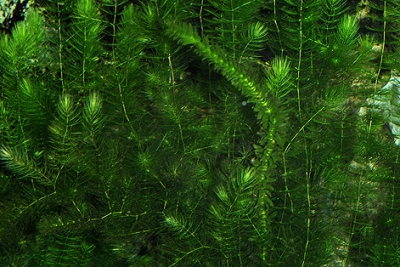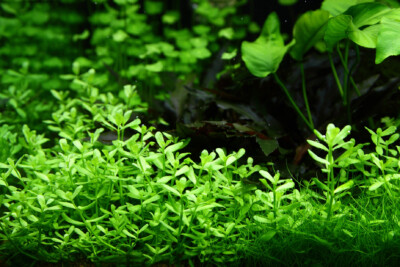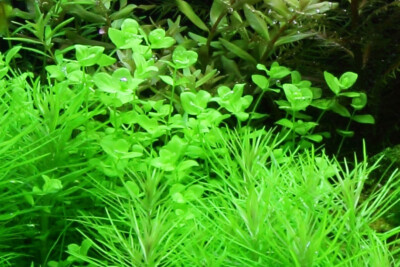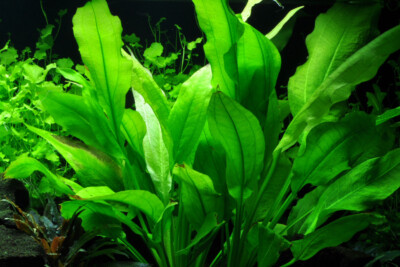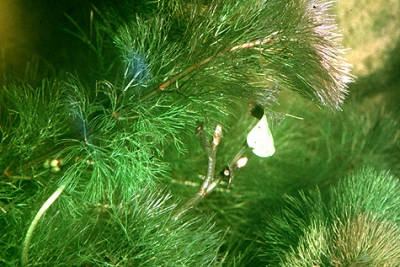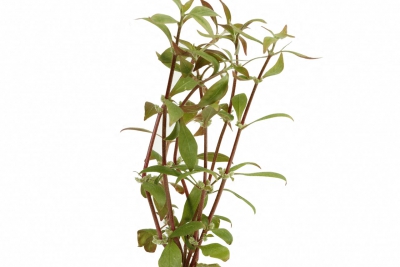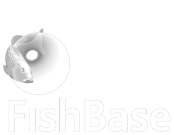black arawana
| Family | Osteoglossidae |
|---|---|
| Genus | Osteoglossum |
| IUCN category (World) | LC |
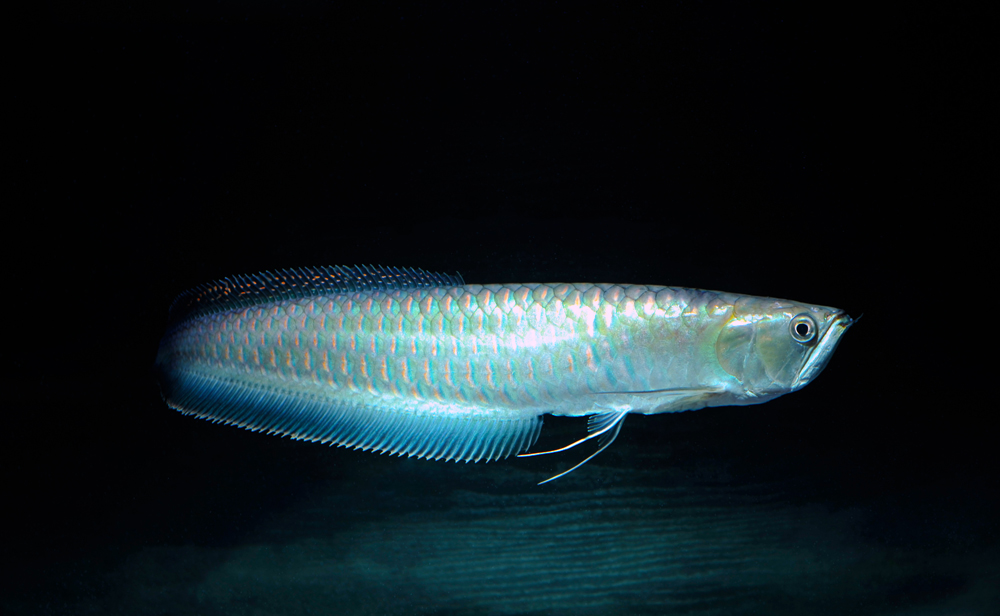

Introduction
The Osteoglossum ferreirai, more commonly known as the black arowana, is a tropical predatory species native to South America.
Who is it?
Morphology
-
Average size70 cm
-
Maximum size90 cm
-
Longevity25 year
-
ShapeUnclassifiable
-
Average size70 cm
-
Maximum size90 cm
-
Longevity25 year
-
ShapeUnclassifiable
How to recognize This fish ?
Locally, it is called the "Aruwana". In French, its vernacular name is "dragon fish", due to the huge scales that cover its slender body. Its English vernacular name is "water monkey", because of its ability to leap out of water to catch its prey.
Its upturned mouth indicates its preference for surface prey, and even prey outside of the water. In the wild, it rarely exceeds 90 cm in length, as it is subject to predation and strong competition for food. In captivity, it easily surpasses one meter within less than 10 years.
As an adult, it is very similar, albeit slightly smaller and more "blue", to the silver arowana. Juveniles, on the other hand, are easily recognizable, being dark with a yellowish line on the upper body, and blue iridescence on the dorsal and anal fins.
Sexual dimorphism
From a subadult stage, around 40-50 cm, males can be distinguished by a very fleshy lower lip, lined with small teeth, that protrudes over and covers the upper lip. This distinctive feature serves a purpose in the male's monoparental care of the eggs, and then the larvae (see reproduction protocol).
Additionally, females appear to develop longer than males, reaching a larger size (based on specimens caught in sport fishing in South America).
Behaviour & Life cycle
-
dietcarnivorous
-
Sociabilitysolitary
-
territorialNo
-
Way of livingdiurnal
The black arowana is a fish that naturally resides close to the surface. It is a species with a rather calm temperament. In the wild, it is found in relatively large, yet loose groups. It is not strictly a schooling fish, but rather sociable.
The black arowana is a true carnivore. It is a fish that hunts its prey by ambush, both on the surface and above the water, and is one of the top predators in its environment.
It is an tireless swimmer, gracefully undulating constantly.
Although this fish is non-territorial per se, it can sometimes be aggressive towards other species, especially when space and food are scarce.
Reproduction
-
Reproductionovipare incubateur buccal
The black arowana is an oviparous monoparental mouth-brooding fish. Only the male provides care and guardianship.
It is less common in the trade, as it is less frequently bred in semi-natural industrial-scale ponds than the silver arowana. This is due to its more specific requirements for acidic and soft water. Conditions that are trickier to replicate in semi-natural ponds (blackwaters)
Harmless species
This species does not represent any particular threats to humans when encountered in its natural environment.
Origin and distribution
What is its habitat?
Natural environment characteristics
-
Temperature24 - 30 °C
-
pH (acidity)6 - 7.2
-
gh (hardness)3 - 10
Biotope presentation
The black arowana is a fish that explores different biotopes depending on the season. During the dry season, if it does not get trapped in evaporating Igarapés, it will join the main course of its river and live in a fairly large colony.
During the rainy season, it ventures into flooded forests and hunts on the surface (small fish, amphibians, insects) and even above the surface (insects, spiders, birds, small mammals)
the biotopes are therefore once again diverse, depending on the season.
Species of the same biotope
Main recommendations for fishkeeping
Deontology
In order to preserve wildlife, if you acquire this animal, it must not be released into the wild. See also, the Fishipedia charter.
Fishipedia supports the practice of responsible and environmentally friendly aquarium keeping. We encourage maintenance if it is motivated by a desire to understand the biological functioning of living things and if it is done with respect for animal life.
We believe that aquaristics is an opening to the discovery of aquatic environments, especially freshwater, and that this knowledge is necessary to better protect and respect these environments. Logically, we refute the compulsive purchase of animals that would not find a sufficient and / or adapted place in the host aquarium.
Our recommendations
-
Min volume4500 liters
-
Population min1
-
Temperature24 - 30 °C
-
pH (acidity)6 - 7.2
Characteristics
-
Difficulty breedingvery difficult
-
Robustnessrobust
-
Behaviourslightly aggressive
-
Availabilityoccasional
General reminders
It is strongly advised to read the complete dedicated file and to get information on the feedbacks of maintenance of the envisaged animal, this to avoid any potential conflict whose end result is generally the death of the individual (or the other inhabitants). It is important not to overload your aquarium to limit pollution. This will make maintenance easier.
In nature, animals are subject to weather conditions and live in waters with variable characteristics. The recommendations offered by our team for aquarium maintenance are a guidance and cannot be assimilated to scientific datas.
General reminder on maintenance datas
Le démarrage d'un aquarium est une partie primordiale pour l'équilibre et le bien-être des poissons. Lorsque l'on met en eau un aquarium, l'eau passe naturellement par un cycle biologique : le cycle de l'azote. Celui-ci dure environ trois semaines. Tous les 2 jours, nous vous conseillons de tester votre eau jusqu'à ce que le taux de nitrite soit à zéro pendant plusieurs jours d'affilée.
Pour accélérer ce cycle, vous pouvez utiliser un activateur de bactéries comme JBL Denitrol. Cette solution riche en bactéries vivantes et enzymes permet une mise en place rapide du cycle de l'azote. Les poissons peuvent alors être introduits plus rapidement.
Il est important de tester l'eau de son aquarium régulièrement pour maintenir un environnement sain pour les poissons et les autres habitants. Les tests d'eau permettent de mesurer les niveaux de différents paramètres tels que le pH, la dureté totale, ainsi que les taux de nitrates, de nitrites et d'ammoniaque.
Pour réaliser ces tests, vous pouvez utiliser des produits d'analyse spécialisés tels que JBL ProScan qui permet de réaliser un diagnostic de l'eau directement via un smartphone. Il existe également des coffrets de tests plus classiques de bandelettes, comme JBL PROAQUATEST.
En cas d’usage de l’eau du robinet, vous pouvez utiliser un conditionneur d’eau de type Biotopol de JBL pour éliminer les substances nocives comme le chlore, le cuivre, le plomb et le zinc. Une eau trop dure ou trop calcaire peut être inadaptée à de nombreuses espèces tropicales d’eau douce. Si nécessaire, vous pouvez la couper avec de l’eau osmosée ou de pluie filtrée afin d’obtenir une dureté plus adaptée aux besoins de vos poissons et de vos plantes. Les conditionneurs d'eau garantissent une meilleure santé aux poissons et une meilleure croissance des plantes.
Chlorine and chloramine are dangerous for the health of animals. Used to disinfect water, these agents are present in significant quantities in tap water. We recommend using an anti-chlorine agent every time you change the water. In addition to chlorine, treatments and medicines sold for aquarium use sometimes contain dangerous heavy metals in high doses.
Specific needs for the black arawana
The black arawana is a species which lives naturally at a temperature between 24 °C and 30 °C. Nitrate levels should remain below 50mg/L. To keep the water clean and unpolluted, plan on changing 20% to 30% of the water volume each month.
The black arawana is a species whose maintenance is rather reserved for informed aquarists . It can only be successfully carried out by carrying out a minimum of documentation work. Special husbandry conditions can easily lead to the death of the species or other animals.
This species is generally available in specialized shops or from aquarium clubs. Specimens that have been bred for a long time are easier to breed, but special water parameters must be respected.
Jumping fish
Be careful, the black arawana is an excellent jumper, naturally using this faculty to change its living area or to escape from predators. The aquarium must be perfectly covered to prevent him from making a deadly jump...
Cohabitation & Environment
This fish being a predatory species, it is recommended to maintain it in a specific environment, without other species. Indeed, any crustacean or fish of lower size will become a potential prey. A 4500 liter aquarium with at least 500 cm of frontage is the minimum recommended for its maintenance. If you still try to associate it with other species, the cohabitants must be of a size at least comparable to the predator in a much larger volume. The aquarium can be provided with many hiding places and a large space to allow each individual to find refuge if necessary.
Tips for feeding
The black arawana is carnivorous.
This species can eat dry food (flakes, pellets), fresh food and frozen food. To avoid deficiencies, it is recommended to vary the types of food.
Feed animals in moderation to maintain good water quality. Meals should be eaten within 2–3 minutes, served in several small portions rather than a single large ration.
Uneaten food quickly decomposes, releasing ammonia, nitrites, and nitrates, which disturb the aquarium’s biological balance.
Make sure each species can access food properly, slower or bottom-dwelling individuals may require targeted feeding.Food recommendations from our partner JBL - Products PRONOVO
-
Granules
-
Flakes
Reproduction protocol
-
egg-laying protectionYes
Hybridization risks
In general, it is advised not to mix several species of the same genus or different varieties of the same species, to avoid the risks of hybridization.
These animals might interest you
These plants might interest you
Plants play a crucial role in aquariums, both for their ability to filter water by absorbing excess nutrients and for their aesthetic contribution. They provide fish with natural hiding places, can serve as breeding sites, and generally help maintain the overall balance and optimal conditions of the aquarium. The selection presented here includes species from the same regions as the species described on this page, although they do not necessarily come from its exact natural biotope.
To go further
Sources & Contributions
Participation & Validation
The Fishipedia team and specialist contributors are committed to providing high-quality content. However, although the information comes from scientific sources or testimonials from specialists, the cards may contain inaccuracies.

Benoit Chartrer

Christophe Girardet
Translation
Translation done with the valuable contribution of our translators, who make this information available to a wider audience. We sincerely thank them for their commitment.
Scientific partners
Species of the same biotope
